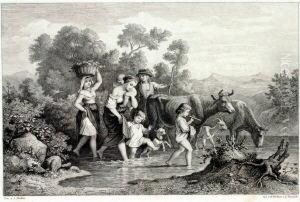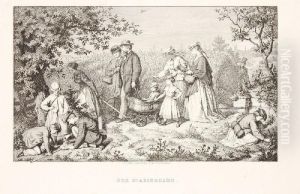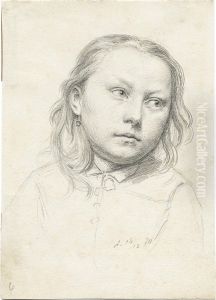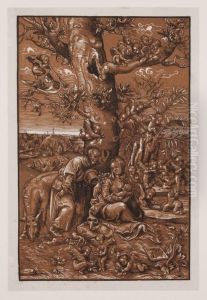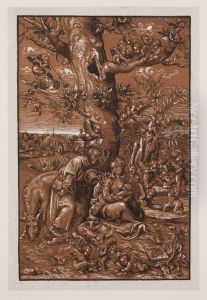Hugo Burkner Paintings
Hugo Bürkner, born in 1818 in Chemnitz, Kingdom of Saxony, was a prominent German painter and illustrator, especially known for his contributions to the field of wood engraving. His artistic journey began at the Dresden Academy of Fine Arts, where he honed his skills and developed a keen interest in the intricacies of printmaking. Bürkner's early career was marked by a traditional approach to painting, but his focus gradually shifted towards graphic arts, particularly after his exposure to the potential of wood engraving as a medium for detailed and expressive artworks.
Bürkner's move to Dresden in the 1840s was a turning point in his career. It was here that he immersed himself in the artistic community, engaging with various art forms but eventually dedicating himself to wood engraving. His work stood out for its meticulous detail, depth of expression, and the ability to convey complex emotions and narratives through the interplay of light and shadow. Bürkner was not just a practitioner but also a significant educator, taking up a position at the Dresden Academy of Fine Arts, where he influenced a generation of artists and engravers. His teaching emphasized the importance of technical precision, creative composition, and the expressive possibilities of wood engraving.
Throughout his career, Bürkner contributed to various publications, illustrating books and magazines, thereby helping to popularize wood engraving as a respected art form in Germany and beyond. His illustrations often depicted scenes from literature, folklore, and daily life, showcasing his versatility and deep understanding of different subjects. Hugo Bürkner's legacy is not merely in the artworks he produced but also in the standards he set for wood engraving and the impact he had on his students. He passed away in 1897, leaving behind a body of work that continues to be appreciated for its technical mastery and artistic beauty.
